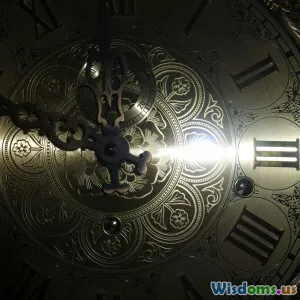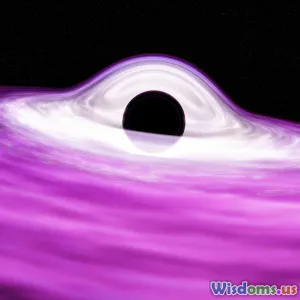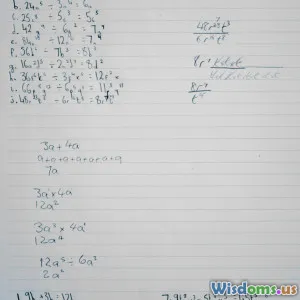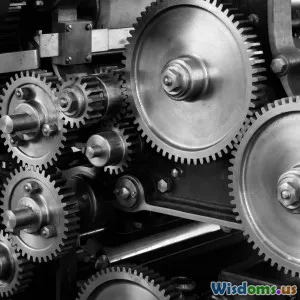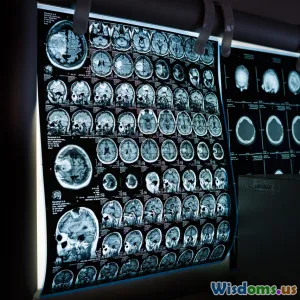
Gravitational Waves How Scientists Detect The Unseeable
8 min read Exploring how scientists detect gravitational waves, unveiling cosmic mysteries through advanced technology and groundbreaking discoveries. (0 Reviews)
Gravitational Waves: How Scientists Detect The Unseeable
Introduction
Imagine a symphony of the universe, composed not of sound, but of ripples in the very fabric of spacetime. These ripples, called gravitational waves, have been traveling across the cosmos for billions of years, invisible yet powerful, whispering secrets about the most cataclysmic events in the universe. For decades, scientists could only theorize about their existence until the dawn of the 21st century empowered them to detect these imperceptible waves. This article unfolds the fascinating journey of how scientists detect gravitational waves, the technologies behind this marvel, and their transformative implications for astronomy and physics.
The Nature of Gravitational Waves
To appreciate how scientists detect gravitational waves, we must first understand what gravitational waves are. Predicted by Albert Einstein in 1916 as part of his general theory of relativity, gravitational waves are distortions in spacetime generated by massive accelerating objects, much like ripples on a pond's surface caused by a tossed rock.
What Causes Gravitational Waves?
Gravitational waves typically arise from cosmic events involving enormous masses and energy:
-
Merging Black Holes: When two black holes spiral into one another and coalesce, their violent union produces powerful gravitational waves.
-
Neutron Star Collisions: The frenetic dance and collision of dense neutron stars unleash detectable waves.
-
Supernova Explosions: The explosive death of massive stars also emits gravitational waves.
Properties That Make Detection Challenging
These waves distort spacetime itself but with an exceedingly tiny effect. Consider this: even a powerful gravitational wave passing through Earth alters distances by less than one-thousandth the diameter of a proton. These minuscule fluctuations necessitate extraordinary sensitivity in detection instruments.
The Pioneering Technologies Behind Detection
The quest to detect gravitational waves has inspired technological ingenuity of the highest order. Two main instruments lead this frontier: the Laser Interferometer Gravitational-Wave Observatory (LIGO) and the Virgo interferometer.
Laser Interferometry: How It Works
At the heart of gravitational wave detectors lies the technique of laser interferometry. Here’s the basic principle:
-
Splitting a Laser Beam: A powerful laser is split into two beams traveling in perpendicular tunnels kilometers long.
-
Reflection by Mirrors: The beams bounce back and forth between extremely precise mirrors suspended at the ends of each arm.
-
Recombination and Interference: Upon return, the beams are recombined, and their wave patterns interfere.
When a gravitational wave passes through, it stretches one arm of the interferometer while compressing the other, altering the light paths ever so slightly. This causes tiny shifts in the interference pattern, signaling that a gravitational wave has been detected.
LIGO: The Trailblazer
Operating in the United States, LIGO features two facilities located in Louisiana and Washington, spaced thousands of kilometers apart. This twin-detector setup helps distinguish gravitational waves from local noise.
-
Sensitivity: LIGO’s arms are 4 kilometers long.
-
Detection Threshold: Capable of measuring length changes smaller than 10^-18 meters.
On September 14, 2015, LIGO achieved a watershed moment by detecting gravitational waves from two merging black holes over a billion light-years away. This discovery validated Einstein’s century-old prediction and opened a new window into the cosmos.
Virgo: Complementing LIGO
Situated in Italy, Virgo offers complementary sensitivity and helps to improve the pinpointing of gravitational wave sources in the sky. Virgo’s collaboration with LIGO enhances detection confidence and source localization.
Real-World Impact of Detecting Gravitational Waves
A New Era of Astronomy
Gravitational wave detection inaugurates "multi-messenger astronomy," combining gravitational wave data with electromagnetic waves (light, radio, X-rays) and neutrinos. This comprehensive approach paints a fuller picture:
-
In 2017, gravitational wave detectors picked up waves from colliding neutron stars. Telescopes worldwide observed the ensuing gamma-ray burst and heavy element formation, confirming theories about short gamma-ray bursts and nucleosynthesis.
-
These observations help unravel the enigmatic processes behind stellar life and death.
Testing Fundamental Physics
Gravitational waves provide a novel testing ground for general relativity in strong gravitational fields. Some recent results strongly confirm Einstein's theory, while future detections might reveal inconsistencies leading to new physics.
Probing Black Hole Properties
By analyzing waveforms, scientists extract the masses, spins, and other characteristics of black holes and neutron stars, objects otherwise invisible. This enhances understanding of their formation, evolution, and interactions.
Challenges and Innovations in Detection
Eliminating Noise
The exquisitely sensitive detectors contend with a barrage of noise sources:
- Seismic vibrations.
- Thermal fluctuations.
- Quantum noise in lasers.
Continuous innovations include advanced seismic isolation systems, cryogenic cooling of mirrors, and quantum squeezing of light to improve sensitivity.
Space-based Detectors
The future of gravitational wave detection lies beyond Earth:
-
LISA (Laser Interferometer Space Antenna): A proposed ESA-NASA mission planned for the 2030s that will place three spacecraft millions of kilometers apart, detecting lower-frequency waves from massive black hole mergers and even the Big Bang’s echoes.
-
These missions will broaden the observable gravitational wave frequency range.
Conclusion
Gravitational waves have transformed from theoretical ripples in spacetime to a revolutionary tool for exploring the universe’s most enigmatic phenomena. Through sophisticated instruments like LIGO and Virgo, scientists detect these waves despite their minuscule effects, unveiling new dimensions of cosmic activity. The era of gravitational wave astronomy enriches our understanding of black holes, neutron stars, and fundamental physics, offering a deeper connection with the universe’s grand symphony. As technologies advance, future detectors will continue revealing the unseen, bridging the gap between imagination and discovery.
The unseeable has become observable—ushering a new dawn in modern science.
Rate the Post
User Reviews
Popular Posts










